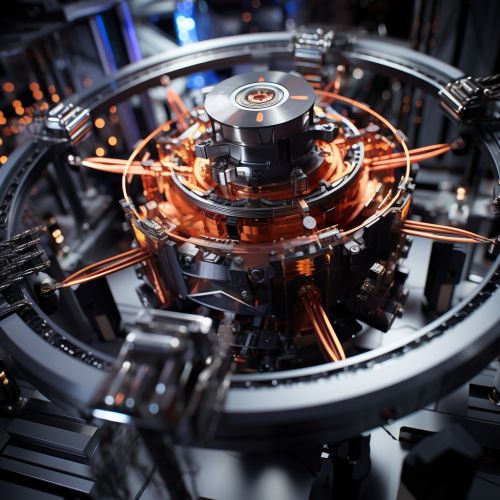Quantum Computing with Quantum Optomechanical Systems in Quantum Computing
Introduction
Quantum computing is a rapidly advancing field that leverages the principles of quantum mechanics to process information. One of the key components of quantum computing is the quantum optomechanical system, which combines the principles of quantum optics and mechanics to manipulate and control quantum states. This article will delve into the intricate details of quantum computing with quantum optomechanical systems.


Quantum Computing
Quantum computing is a type of computation that uses qubits instead of classical bits to perform calculations. The fundamental difference between a classical bit and a qubit is that while a classical bit can be in one of two states (0 or 1), a qubit can be in a superposition of states, allowing it to perform multiple calculations simultaneously. This property, along with entanglement and interference, are the key principles that enable the extraordinary computational power of quantum computers.
Quantum Optomechanical Systems
Quantum optomechanical systems are devices that allow for the manipulation and control of mechanical oscillators using light. These systems are typically composed of a mechanical oscillator that is coupled to an optical cavity, allowing for the transfer of energy between the mechanical and optical degrees of freedom. The interaction between light and mechanical motion in these systems can be used to cool mechanical oscillators to their quantum ground state, create non-classical states of light and motion, and even to test the limits of quantum mechanics.
Quantum Computing with Quantum Optomechanical Systems
Quantum optomechanical systems have a wide range of applications in quantum computing. One of the primary uses of these systems is in the creation and manipulation of qubits. The mechanical oscillator in a quantum optomechanical system can be used as a qubit, with the two quantum states of the oscillator corresponding to the two states of a qubit. The light in the optical cavity can then be used to manipulate the state of the qubit, allowing for the performance of quantum computations.
In addition to their use in quantum computation, quantum optomechanical systems also have applications in quantum communication and quantum information processing. The ability to control and manipulate light and mechanical motion at the quantum level opens up new possibilities for the transmission and processing of quantum information.
Conclusion
Quantum computing with quantum optomechanical systems is a fascinating and complex field that is at the forefront of modern technology. The unique properties of these systems, combined with the principles of quantum mechanics, provide a powerful platform for the development of next-generation computing technologies. As our understanding of these systems continues to grow, so too will their potential applications in quantum computing and beyond.
